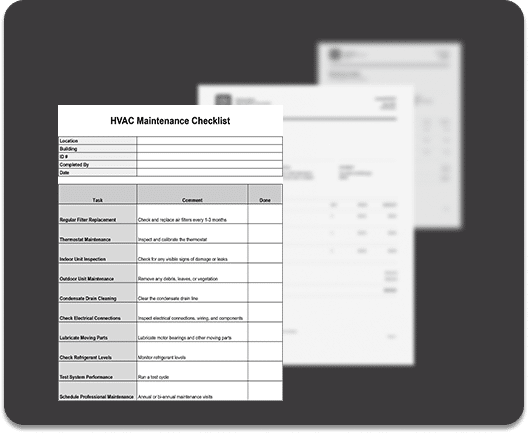Learning leaders are asking, “Which is the best learning tech stack?” Instead of starting with technology, we urge you to check your training needs first.
There’s been a lot of talk lately about the proliferation and evolution of learning technologies. From content authoring tools and digital mentoring solutions to web conferencing and learning management, there’s no doubt that the learning technology market is vast and fragmented. And it’s no surprise that technology vendors are eager to create and sell learning platforms that tout the benefits of all-in-one solutions.
The business and learning leaders we talk to are increasingly asking, “Which is the best learning technology stack?” It’s a fair question. Yet, all too often, small- and mid-size enterprise leaders are skipping the more important question of, “What is the training we need?” By overlooking that essential answer, leaders risk choosing the wrong technology solution for their organizations. Are you choosing your next learning tech stack? We urge you to check your training needs, first.
What the Industry is Saying About the Learning Tech Stack
To provide some context for this blog, we share a few industry references regarding the learning tech stack and evolving platforms.
In November 2021, Training Industry published its Trends 2022: Enhancing the Efficiency of the Training Function report, highlighting six trends expected to “make a lasting impact on the training industry for years to come.” One of the six? “Reexamining Your Learning Tech Stack.” Training Industry defines the learning tech stack as, “the sum total of technologies an organization uses to support employee learning” and encourages learning leaders to evaluate the purpose of each tool and determine whether it is working as intended. The authors identify this barometer for success: “ensuring employees are receiving the right information at the right time and in the right modality.”
Over the past five-plus years, global talent market analyst and author Josh Bersin has been tracking the evolution of disparate learning tech stacks into what he’s named “Learning Experience Platforms” (abbreviated LXPs). Bersin describes LXPs as, “intelligent learning portals that use a variety of approaches to making all forms of learning content (articles, videos, courses, podcasts) easy to find for employees.” He sees LXPs as the evolved learner interface and evolving system of record that integrates with a learning management system (LMS), which he still sees as the system of record for training administration. Each of the top LXPs Bersin is tracking is evolving differently. One is focused on talent mobility and talent management. Another is building out enterprise knowledge and skills management capabilities. Still another is betting on a built-in ability to publish and index videos and transcribe and translate content as a key capability. Like the evolution of human resource management systems 20 years ago, the LXP vendors are aiming to be the go-to solution for solving the challenges of integrating disparate systems by providing a definitive enterprise learning technology platform.
eLearning expert and analyst Craig Weiss is also tracking the evolution of learning platforms. He has been clear that he doesn’t subscribe to the LXP terminology, preferring “learning engagement platform,” instead. Like Bersin, he’s watched learning technology vendors build out integrated learning technologies that “bolt on” to an LMS. He sees, “Content is the queen here, next to the engagement (king).”
Clearly, learning technologies and platforms are continuing to evolve to meet the needs and anticipated needs of learners and administrators. It’s good to know what the trends are. It’s also good to know what your organization needs from your learning technologies and – as Training Industry and Mr. Weiss emphasize – from the information and content you’re providing to your learners.
What Your Learning Tech Stack Should Do
What you need from your learning technologies is unique to you. To understand what your learning tech stack should do for you, take stock of your needs in these four areas:
1. Learning goals.
Before evaluating the numerous learning technologies out there, be sure you understand the goals of your learning. Are you primarily training people on a factory floor to operate machinery safely and effectively? Do you have a comprehensive learning program for general purposes across a wide swath of job roles? Are you aiming to train top-tier engineers to improve their skills? How are you moving your employees forward and how are you evaluating that progress?
We recently spoke to our CEO, Tom Grobicki, on the topic of learning tech stacks and he emphasized the importance of aligning the technology with learning goals, “The stack can help you meet your goals. Or, it may become a deterrent to your goals.”
2. Learning program.
What does your learning and development program look like? Are you only serving employees? Or are you also training your contract employees, partners, and/or customers? Are you training people across multiple retail locations, across a distributed remote work environment, or primarily on a shop floor? How is learning and training integrated with your culture?How important is 24/7 access? Or group collaboration? Do you tie the training to learning plans, skills assessments, and performance management?
How do you measure the success of your program? Be specific when describing the training and learning experiences you’ll want the technology to support.
3. Learning content.
What learning content do you need and how is it delivered? Is it streaming online or video? PDF documents or live demonstrations? Do you create your own content or purchase from third parties? Or both? Does your workforce rely on online, classroom, or conference learning opportunities? Or a mix of these formal experiences with less formal mentoring and on-the-job stretch experiences? How do you measure the success of your content?
Especially with content, be sure you’re clear about the flexibility and support you want from learning technology vendors.
4. Technology support.
How tech-savvy is your team? How important is customer support from your learning technology vendor? Do you want strategic advice and guidance or straightforward implementation support and issue troubleshooting? What technology integration needs do you have? Where is your system of record for learning and how does that need to integrate with other technologies?
Mr. Grobicki adds, “Be sure you have a process in place for measuring the effectiveness of the learning and the learning technology stack.”
How to Choose a Tech Stack That Works For You
All too often, the selection process for technologies (not just learning technologies) is too shallow, with buyers not having a full understanding of what the technology can – and cannot – do. Sometimes, a frugal mindset ignores the potentially substantial cost of a mistake, creating frustration and wasted time for employees and administrators.
By arming yourself and your team with answers to the questions above, you’ll be better positioned to evaluate available learning technologies.
- Is your team going all-in on video development and delivery? A technology or platform with advanced video content development features may be a good fit.
- Are you looking for third-party content? A platform with built-in content may not be sufficient or flexible enough to meet your needs. (We talked to one disappointed learning leader who discovered, too late, that they either had to use the content that came with their system, or they had to create new content to be added to the library before it could be consumed and tracked).
- Are you training a broad base of employees across a range of skills and topics? Think ahead about what data you want to collect, analyze, and report on.
- Is yours a competency-based organization, where learning is tied to skill development? Be sure your LMS and competency management systems work well together.
- Would your team benefit from strategic guidance and tech support? Check the reputation of your potential vendor for responsiveness to companies like yours.
Our advice? Try a few different technologies that appear to meet your requirements. Do a hands-on “test drive” to ensure that the depth of functionality and flexibility that you expect is present in the tech stack – not just the marketing brochures.
As Mr. Grobicki points out, “Another advantage of trying a few different technologies is that you also can see how the vendors help you with the management process.”
When it comes to learning technologies, there are many possibilities available today. When you’re choosing your learning tech stack, insist that the technologies support your training goals, priorities, program, and process – not the other way around.
If you’re puzzling through your learning tech stack, start by assessing your learning program with our “How to Know When It’s Time to Update Your Training Program” tip sheet. Or contact us to find out how some Avilar customers are using our WebMentor LMS™ and WebMentor Skills™ competency management system together.
RELATED RESOURCES
7 Ways an LMS Can Strengthen Your Competency Management Program
How to Choose the Best Performance Management Software for Your SME
5 Advantages of a Competency-Based Approach to Solving Workforce Issues
Can Your LMS Do THIS?


















